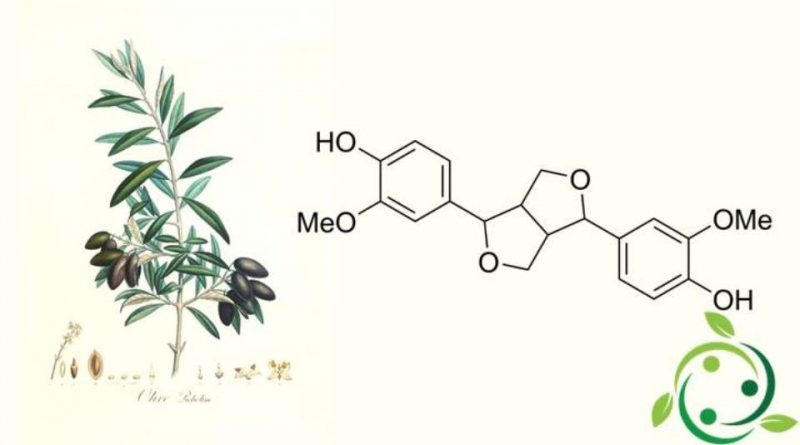Pinoresinol
Pinoresinol
Pinoresinol is a lignano whose term in the official IUPAC nomenclature is: (+) form: 4 – [(3S, 3aR, 6S, 6aR) -6- (4-hydroxy-3-methoxyphenyl) -1,3,3a, 4,6,6a-hexahydrophide [3, 4-c] furan-3-il] -2-methoxyphenol also known by the names, in the two forms of: (+) – Pinoresinol and (-) – Pinoresinol.
Pinoresinol has a molecular brute formula: C20H22O6 and belongs to the chemical category of lignans.
This substance is present, in nature, in the species: Styrax sp. and in (Forsythia suspensa (Thunb.) Vahl). It is also found in the caterpillar of the cabbage butterfly (Pieris rapae Linnaeus, 1758), where it acts as a defense molecule against ants.
Pinoresinol is also present in some foods such as sesame seeds, cabbage (Brassicaceae) and olive oil.
Pinoresinol inhibits the α-glucosidase enzyme in vitro and can therefore act as a hypoglycaemic agent. A study on extra virgin olive oil has shown that pinoresinol possesses chemo-prevention properties in vitro. There has been an increase in apoptosis and cellular arrest in the G2 / M phase in the p53-competent cells.
This factor is important because the content of this molecule in olive oil depends both on cultivation factors and during the oil extraction process.
Some research carried out during the extraction phase of olive oil has shown that the content of phenolic compounds is mainly influenced by the kneading temperature, in particular the phenolic content increases with increasing temperature, while the kneading time exerts a irregular influence, while the adjuvant dosage has little influence.
The flavonoid content, both luteolin and apigenin, decreased with increasing temperature and kneading time.
The content of pinoresinol is increased with the temperature and the kneading time.
As regards the field parameters, olive oils obtained from non-irrigated olive groves have a higher content of phenolic compounds.
The flavonoid content had a maximum content around the colorimetric maturation index 4, moreover, the content was usually higher for irrigated olives.
On the contrary, the content of pinoresinol decreased with the increase in the maturity index and it was the oils obtained from dry olive groves that contained more pinoresinol.
It is clear, therefore, that depending on the aromatic and healthy result that you want to obtain, all the parameters, in the field and in the oil mill, must be carefully calibrated, also according to the health effects of olive oil.
Finally it is underlined how pinoresinol, together with other vegetable lignans, is converted into enterolignans by the intestinal microflora present in the human body.
Warning: The information shown is not medical advice and may not be accurate. The contents are for illustrative purposes only and do not replace medical advice.

